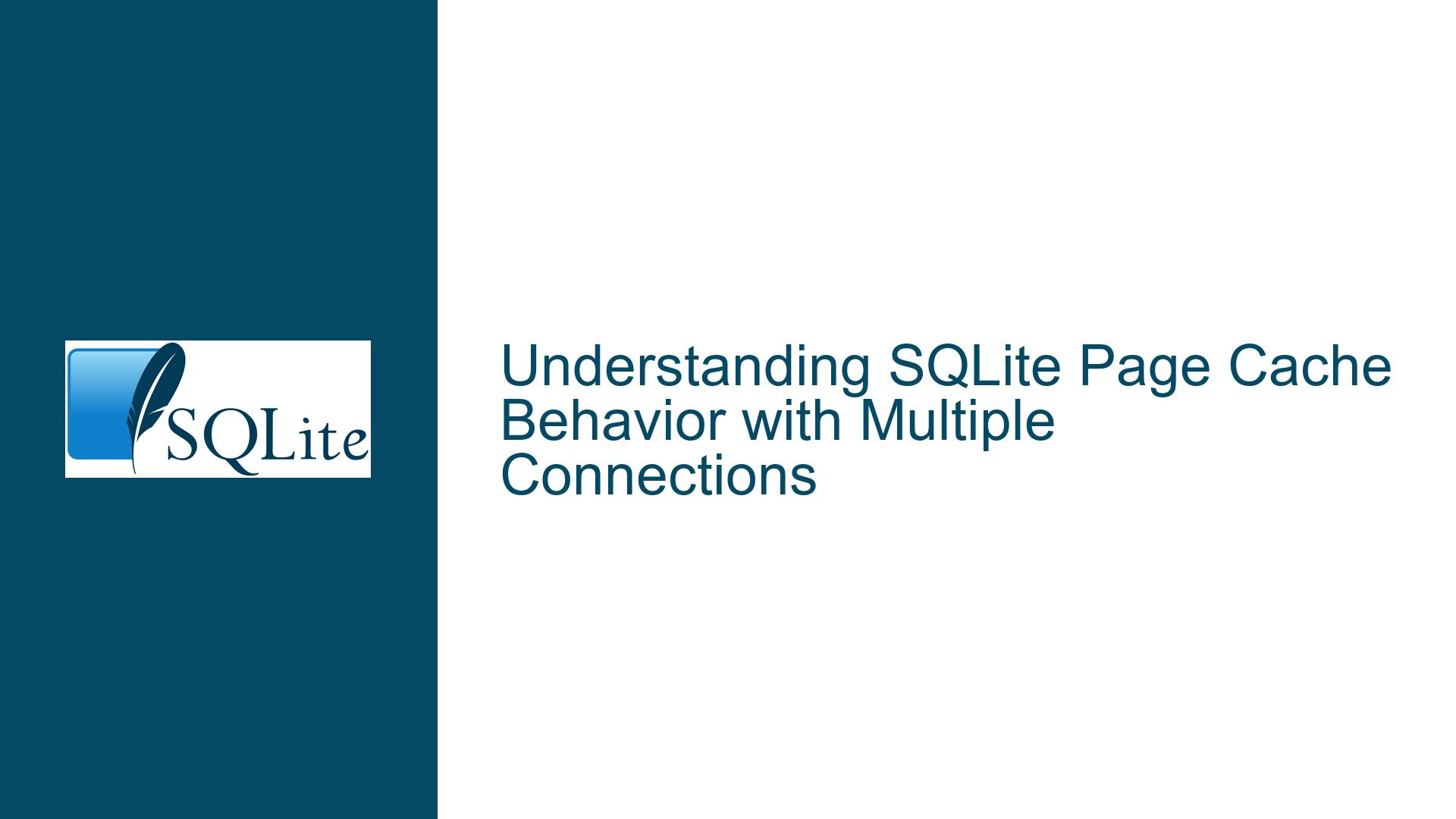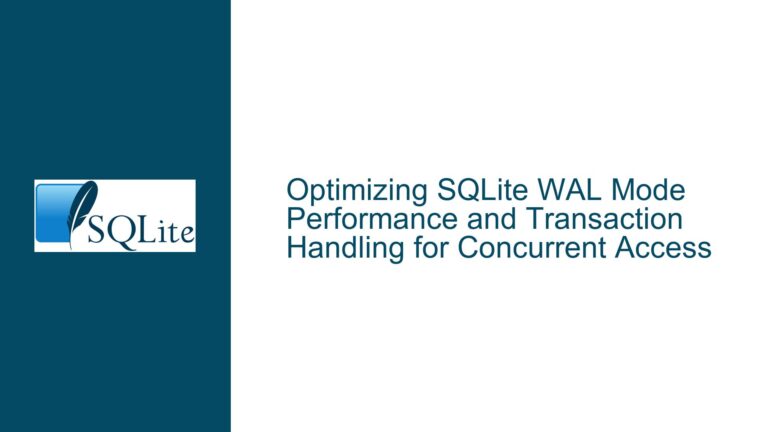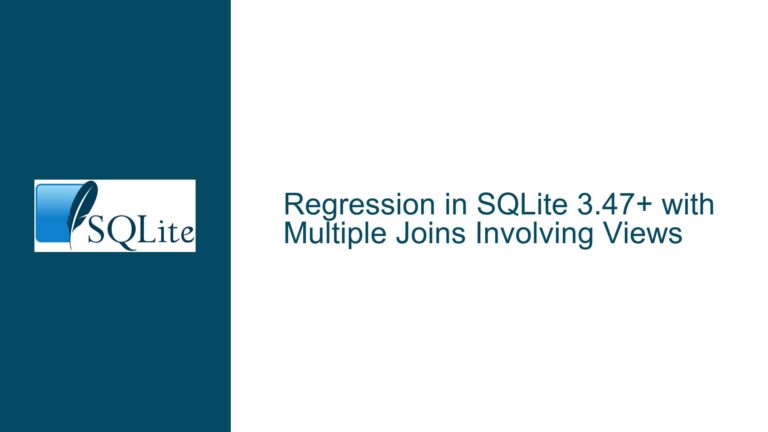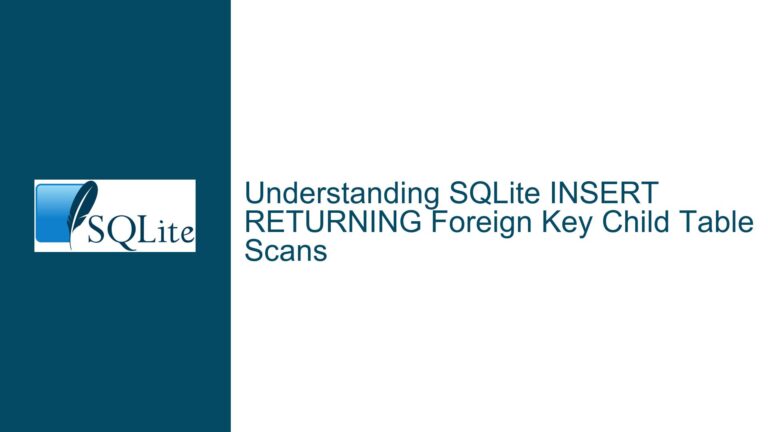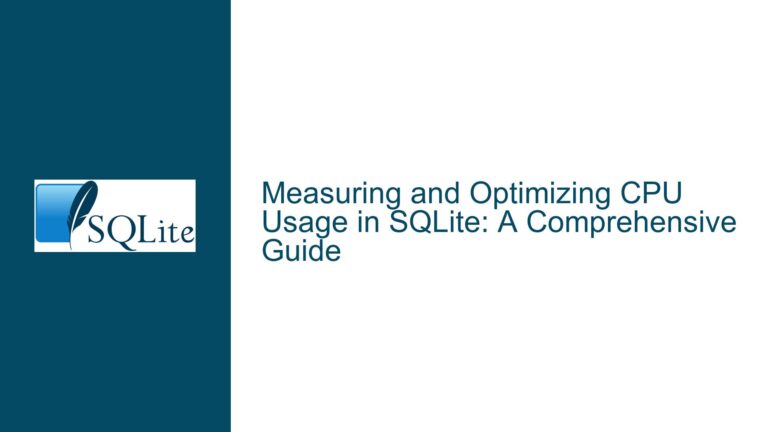SQLite Page Cache Behavior with Multiple Connections
SQLite Page Cache Isolation and Coherency Across Connections
The core challenge in SQLite’s page cache management lies in balancing performance with data consistency when multiple connections access the same database. Unlike client-server databases, SQLite operates as an embedded library, which means it lacks a centralized cache manager. Each connection maintains its own private page cache, leading to questions about how stale data is avoided and how disk I/O is minimized. This isolation raises concerns about redundant caching, unnecessary disk reads, and the mechanisms that ensure one connection’s modifications are visible to others. The problem becomes more nuanced when considering differences between rollback journal mode (non-WAL) and Write-Ahead Logging (WAL) mode, as well as the role of memory-mapped I/O (mmap) in bypassing or complementing SQLite’s native caching logic.
In non-WAL mode, connections rely on a change counter in the database header to detect modifications. If the counter remains unchanged, a connection assumes its cached pages are valid. However, this requires periodic checks against the disk-resident header, which introduces latency. WAL mode eliminates the dependency on the change counter by using a wal-index to track active transactions, but this shifts the coherency logic to WAL-specific structures. Meanwhile, memory-mapped I/O allows connections to share the operating system’s page cache, but this bypasses SQLite’s internal cache management entirely. These layers of complexity create scenarios where developers must understand the interplay between SQLite’s design, the operating system’s file caching, and application-specific access patterns to optimize performance and avoid data staleness.
Architectural Constraints and Cache Invalidation Triggers
The root causes of cache-related inefficiencies in multi-connection SQLite environments stem from three architectural decisions: per-connection page caches, lack of inter-process shared cache, and reliance on filesystem metadata for coherency checks. Each connection operates as an independent entity with its own memory buffers for database pages. When Connection A modifies a page, Connection B’s cache remains unaware of this change until B performs a coherency check. This check occurs at transaction boundaries or statement executions, depending on isolation levels and pragma settings. The absence of cross-connection cache synchronization means that even in WAL mode, where readers can coexist with writers, stale data might persist in a connection’s cache if it does not re-read the wal-index or WAL file.
Another critical factor is the granularity of cache invalidation. In non-WAL mode, any write operation increments the database header’s change counter, forcing all connections to invalidate their entire page cache upon detection. This “all-or-nothing” approach ensures consistency but penalizes read-heavy workloads with frequent cache flushes. WAL mode mitigates this by allowing readers to continue using pre-transaction snapshots while writers append to the WAL file. However, this introduces complexity in managing the wal-index, which must be atomically updated to reflect committed transactions. Memory-mapped I/O further complicates matters because mmap’d pages are managed by the operating system, not SQLite, leading to scenarios where a connection might read stale data from the OS page cache if another process modifies the database file externally.
Strategies for Cache Coherency, Performance Optimization, and Debugging
To address cache coherency and performance issues in multi-connection setups, developers must adopt a combination of configuration adjustments, operational best practices, and monitoring techniques. Enabling WAL mode is the first recommended step, as it reduces contention between readers and writers and allows for more granular cache management via the wal-index. In WAL mode, connections can read consistent snapshots without invalidating their entire cache, as the wal-index directs them to the correct pages in either the main database file or the WAL. However, WAL requires careful management of the checkpointing process to prevent uncontrolled WAL file growth.
For scenarios requiring shared caches, shared cache mode (via sqlite3_open_v2 with SQLITE_OPEN_SHAREDCACHE) enables multiple connections within the same process to share a single page cache. This eliminates redundant caching but introduces stricter locking requirements and is incompatible with WAL mode. Alternatively, memory-mapped I/O (PRAGMA mmap_size) can offload caching to the operating system, allowing multiple connections (even across processes) to benefit from the OS’s unified page cache. This approach reduces SQLite’s memory footprint but sacrifices control over cache eviction policies and may lead to increased I/O if the OS prematurely pages out mmap’d regions.
To diagnose cache-related performance issues, developers should monitor page cache hits/misses using sqlite3_status(SQLITE_STATUS_PAGE_CACHE_USED, ...) and analyze query plans with EXPLAIN QUERY PLAN to identify unnecessary full-table scans. Enabling the SQLITE_FCNTL_CHUNK_SIZE file control can optimize I/O patterns for large reads, while adjusting the cache_size pragma ensures sufficient memory is allocated to each connection’s private cache. In cases where stale reads are suspected, forcing a schema reload (PRAGMA schema_version) or re-executing a transaction after checking the change counter can validate cache consistency. For advanced use cases, combining WAL mode with memory-mapped I/O and periodic checkpointing strikes a balance between concurrency, coherency, and I/O efficiency.
